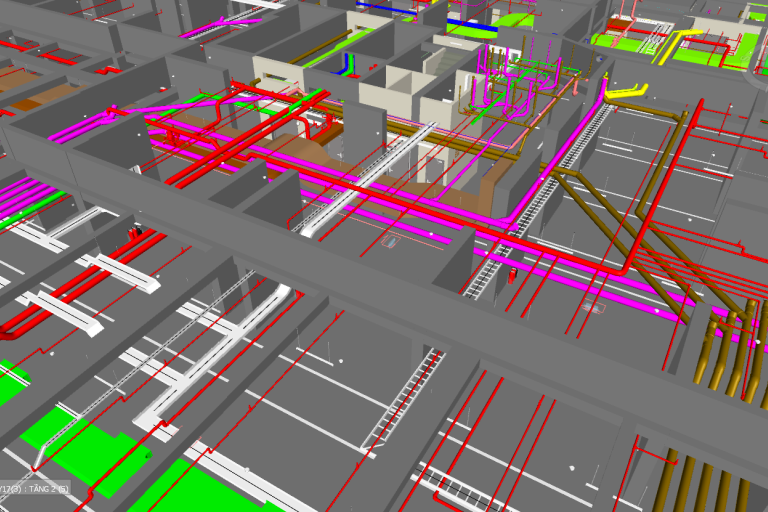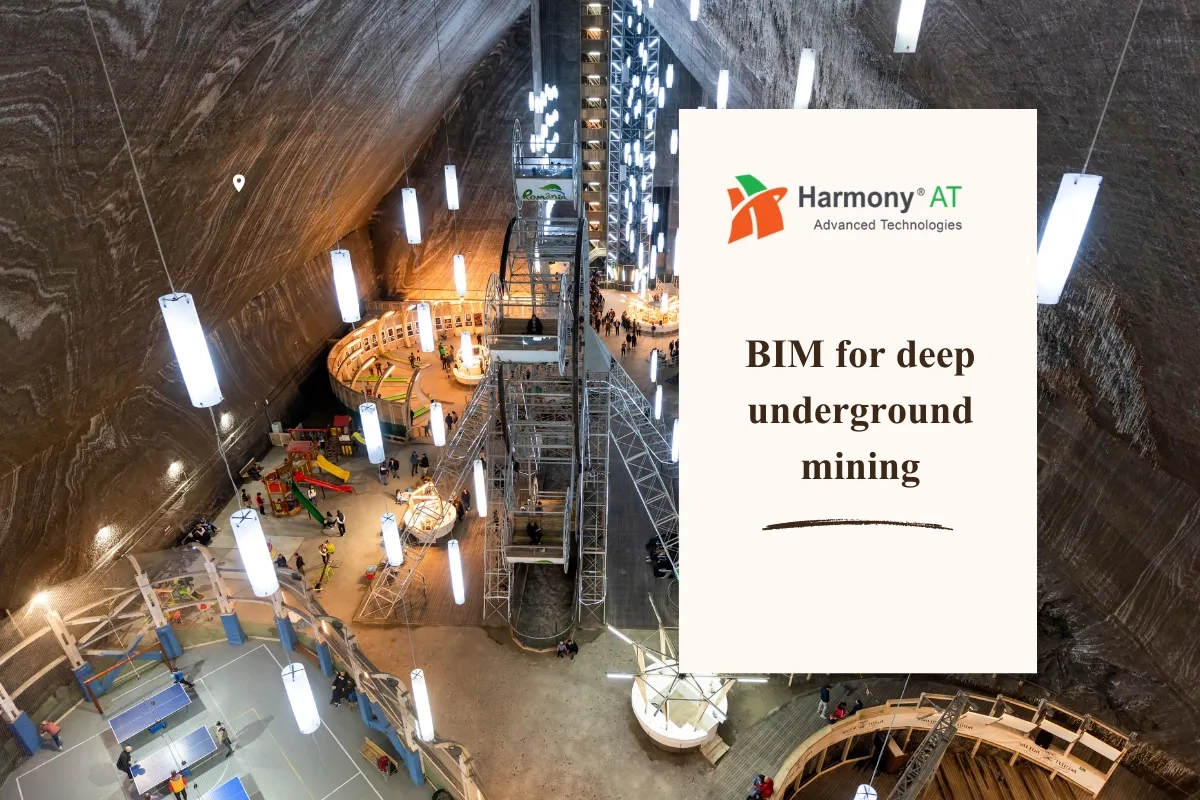In today's construction world, Revit is like a powerful tool that helps people design and build buildings better. Its advanced Building Information Modeling (BIM) capabilities have reshaped the industry, offering architects, engineers, and contractors a digital canvas to craft their designs with unparalleled precision. Yet, amidst this digital revolution, the age-old challenge of clashes persists – those pesky collisions and conflicts that can disrupt even the most meticulously planned projects. Enter Revit clash detection, a powerful tool designed to ferret out these discrepancies and streamline the construction process. In this blog post, we embark on a journey to unravel the mysteries of Revit clash detection, exploring its nuances, capabilities, common challenges and how to overcome them.
What is Clash Detection?
Clash detection is the process of identifying places where different building components might run into each other, causing problems during construction. These clashes could be between walls and pipes, ducts, and electrical wires, or even beams and doorways.

Why is Clash Detection Important in Construction?
Catching clashes early is crucial for a smooth and successful building project. Here's why:
Saves Time and Money
Imagine discovering a clash between a pipe and a beam halfway through construction! Fixing it would mean delays and extra costs. Clash detection helps identify these issues before construction begins, saving time and money.
Improves Quality
Clashes can lead to weak spots in the building or poor functionality. By finding them beforehand, you can ensure a better-quality final product.
Enhances Communication
Clash detection often reveals communication gaps between different teams working on the project. Addressing these clashes early on fosters better communication and collaboration.
Traditional Clash Detection Methods vs. Revit Clash Detection.
Before BIM (Building Information Modeling) software, clash detection was a manual process:
2D Drawings Overlay: Teams would physically overlay paper drawings from different disciplines to find clashes. This was time-consuming and prone to errors.
Mock-ups: Sometimes, physical mock-ups were built to identify clashes, which were expensive and wasteful.
Revit clash detection offers a much more efficient and accurate solution:
3D Revit Modeling: Revit allows creating a digital 3D model of the entire building. This model includes all building components from different disciplines, making it easy to identify clashes automatically.
Software Automation: Revit software can automatically scan the model and highlight potential clashes based on user-defined rules. This saves a significant amount of time and effort compared to traditional methods.
Leveraging Revit Clash Detection
Revit clash detection empowers you to proactively identify and resolve spatial conflicts within your BIM model, ensuring a smoother construction process. Here's how it works:

How Does Revit Clash Detection Work?
Model Preparation
A well-organized and coordinated model is essential. Revit allows you to categorize elements, define clear naming conventions, and ensure proper placement for accurate clash detection.
Setting Up Clash Tests
Define specific clash scenarios you want to identify. This could be clashes between structural elements and MEP (Mechanical, Electrical, Plumbing) components, or any other combination relevant to your project.
Running the Clash Detection
With your tests set, Revit scans the entire 3D model and identifies elements that violate the defined clash rules.
Reviewing Results
Revit presents a clear overview of detected clashes, highlighting the elements involved and their location in the model.
Key Features and Tools for Clash Detection in Revit
Clash Tests: Define specific clash scenarios based on element categories, clearances, and overlapping volumes.
Clash Filters: Refine your view of the clashes by filtering based on severity, element types, or location.
Clash Viewpoint: Navigate directly to the location of a clash within the model for a closer inspection.
Clash Resolution Tools: Document solutions and assign responsibility for resolving each clash.
Read more: BIM Clash Detection: Understanding Of Benefits, Types, And Resolution
Why Embrace Revit for Clash Detection?
Construction thrives on precision. Every pipe, duct, and beam need to fit together seamlessly, transforming architectural visions into reality. But even the most meticulous plans can encounter roadblocks – clashes where elements collide, causing delays and rework. Here's where Revit's clash detection shines, offering a powerful toolbox to streamline your workflow and ensure a successful project.
Early Intervention, Big Savings
Imagine discovering a clash between a critical pipe and a support beam midway through construction! The cost and time implications would be significant. Revit's clash detection acts as a proactive guardian, identifying these issues early in the design phase. Addressing them virtually eliminates costly rework on-site, saving you both time and money.
Quality from the Start
Clashes can lead to structural weaknesses and compromised functionality in the final building. By leveraging Revit's clash detection, you can identify and resolve these potential problems before construction begins. This proactive approach ensures a higher quality final product that meets all functional and safety requirements.
Collaboration Made Easy
Clashes often highlight communication gaps between different teams working on the project. Revit's clash detection acts as a bridge, facilitating communication and collaboration. By visualizing clashes in a central 3D model, all stakeholders can identify and address potential problems together, leading to a more streamlined and efficient workflow.
Efficiency at Your Fingertips
Gone are the days of tedious manual clash detection. Revit automates the entire process, scanning your 3D model and highlighting potential clashes based on user-defined rules. This eliminates countless hours of manual effort, freeing up your team to focus on other critical aspects of the project.
Centralized Command Center
Revit keeps all clash information organized within the model itself. This centralized approach ensures clear communication and simplifies clash resolution tracking. Teams can easily access clash reports, assign responsibility for fixes, and track progress towards a clash-free design.
Common Challenges in Revit Clash Detection
While Revit's clash detection is a powerful tool, it's not without its challenges. Here are some common hurdles you might encounter:
False Positives
Revit can sometimes flag situations that aren't actual clashes. This can be due to overly sensitive settings or complex model geometry. Manually reviewing and filtering through these false positives can be time-consuming.
False Negatives
Revit might miss some genuine clashes, especially in tight spaces or with intricate components. Regular model reviews and a healthy dose of skepticism are crucial to ensure no clashes slip through the cracks.
Model Complexity
Large and intricate BIM models can push Revit's processing power to the limit. This can lead to slow clash detection times and potentially mask some clashes. Optimizing models and using powerful hardware can help mitigate this challenge.
Interoperability Issues
When combining models from different software, inconsistencies can arise. These can lead to inaccurate clash detection or even software crashes. Ensuring software compatibility and using clear data exchange protocols are vital.
Communication Gaps
Clash detection highlights potential issues but resolving them requires effective communication. Without clear communication between disciplines, clashes might linger unresolved, hindering project progress.
Why Outsource Revit Clash Detection to Harmony AT?
While Revit clash detection is undeniably powerful, the challenges mentioned previously can significantly impact your workflow. Here's where outsourcing Revit clash detection services to a company like Harmony AT can be a game-changer.

Harmony AT boasts a team of experienced BIM specialists equipped with the latest tools and expertise to tackle even the most complex BIM models. Our experience allows us to navigate the intricacies of clash detection, minimizing the risk of false positives and negatives. Additionally, our powerful hardware ensures smooth handling of large and intricate models, reducing processing times and the potential for missed clashes.
Furthermore, Harmony AT understands the importance of clear communication and interoperability. They can seamlessly integrate with your existing workflows and software, ensuring accurate clash detection and efficient resolution. This eliminates the headaches associated with data exchange issues and streamlines communication between your team and the clash detection specialists.
Ultimately, outsourcing Revit clash detection to Harmony AT frees up your in-house team to focus on core design tasks. Harmony AT's expertise ensures a thorough clash detection process, minimizing the risk of costly rework down the line. This allows you to focus on delivering high-quality projects while staying on schedule and within budget.
Don't let clash detection slow you down – contact Harmony AT today to learn how their expert services can optimize your BIM workflow and ensure a successful project!
Categories





